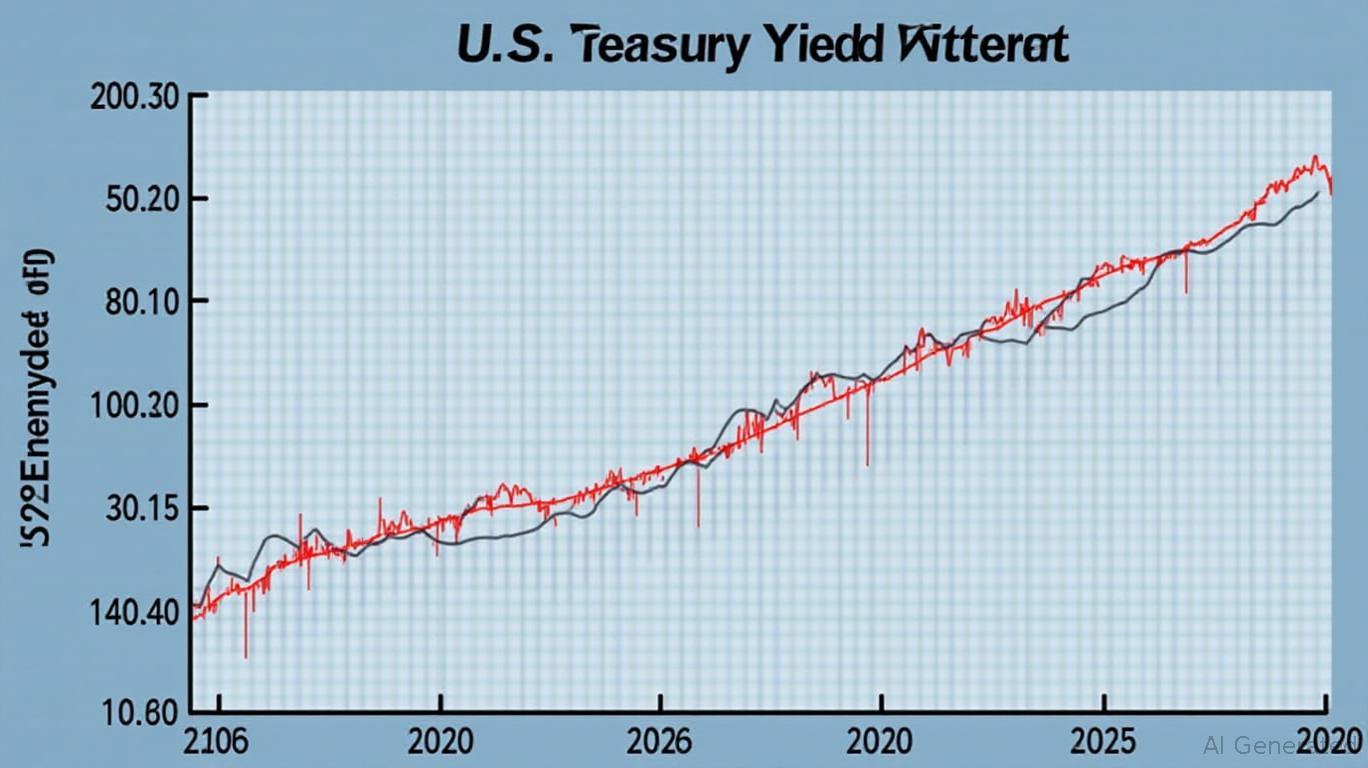Navigating Yield Volatility: Strategies for a Fed-Hesitant Market
The U.S. Treasury yield curve in June 2025 is a tapestry of uncertainty, woven with threads of inflation risks, fiscal policy experiments, and a Federal Reserve caught between easing expectations and stubborn economic headwinds. With the 10-year yield hovering near 4.34% and the 2-year rate at 4.03%, the stage is set for volatility-driven opportunities. Let's dissect how investors can exploit this environment.

The Volatility Drivers: Inflation, Fed Hesitation, and Fiscal Overreach
- Inflation's Lingering Ghost: Despite slowing to 3.2% in May 2025, core PCE inflation remains above the Fed's 2% target. Proposed policies like tariffs (10%-60% on Chinese imports) and immigration restrictions risk reigniting price pressures. These measures could boost demand while shrinking labor supply, creating a wage-inflation spiral.
- Fed's Tightrope Act: The Fed's September 2024 dot plot projected a terminal rate of 2.75%-3.0%, but markets now price in a higher 4.0% rate due to inflation fears and fiscal stimulus risks. This disconnect fuels uncertainty about the timing and depth of rate cuts.
- Fiscal Policy Wildcards: Tax cuts without spending offsets, border wall funding debates, and corporate tax reforms add to uncertainty. A $3 trillion deficit by 2026 could force the Treasury to issue more long-dated bonds, pushing yields higher.
The Yield Curve Dynamics: Steepening, Skew, and Opportunity
The 2s10s yield spread, now at 0.31%, has steepened as traders price in a Fed pause and long-term inflation risks. This creates a volatility-rich environment:
- Downside Skew in Options: Treasury options (e.g., UXY, FV) show elevated put premiums, reflecting fear of fiscal missteps. The TYVY skew (10-year Note futures) hints at structural demand for downside protection.
- New Expiry Tools: CME's Tuesday/Thursday expiries for Treasury options allow tactical hedging around events like the June 18 FOMC decision or July CPI report. Traders can now hedge intraday volatility with precision.
Trading Strategies for Volatility Hunters
- Curve Steepening Plays:
- Long 10-year, Short 2-year: Buy 10-year Treasuries (e.g., TLT ETF) while shorting 2-year notes (SHY ETF) to capitalize on the Fed's delayed cuts.
Options Butterfly: Use call spreads on FV (2Y futures) and put spreads on UXY (10Y futures) to profit from curve steepening without directional bets.
Skew-Exploiting Options:
- Long Put Spreads: Capture the downside skew in UXY options, which are priced for a Fed policy error. For example, buying 10Y puts with strikes at 4.5%-5.0% could yield outsized gains if inflation spikes.
Short Volatility: If the Fed surprises with dovish guidance, shorting TVIX (volatility ETN) could profit from a volatility collapse.
Sector Rotations:
- Value Over Growth: With value stocks undervalued by 14% (vs. growth's 11% overvaluation), sectors like industrials and materials (e.g., CAT, DE) benefit from rate stability and fiscal stimulus bets.
- Short Duration Bonds: Hold BBG Aggregate ETF (AGG) with its 6.2-year duration, avoiding long-dated maturities exposed to Fed surprises.
Risks and Considerations
- Tariff Delays: If courts block proposed tariffs, inflation could ease, sending yields below 4.0%.
- Fed Overreach: An aggressive rate cut cycle could flatten the curve, hurting steepening trades.
- Global Contagion: Japan's 40-year bond yield at 3.7% and the ECB's hawkish stance add global yield pressures.
Conclusion: Position for Range-Bound Volatility
Investors should treat June's yield environment as a range-bound volatility market. Here's the plan:
1. Hedge with Options: Use UXY/FV skew strategies to protect against fiscal shocks.
2. Stay Short Duration: Limit exposure to long bonds (TLT) until inflation trends stabilize.
3. Lean into Value: Shift to industrials and financials (XLF) poised to benefit from moderate rate cuts.
The Fed's hesitation is here to stay—exploit it before the next twist in this high-stakes yield drama.
Gary Alexander
June 6, 2025

Comments
No comments yet